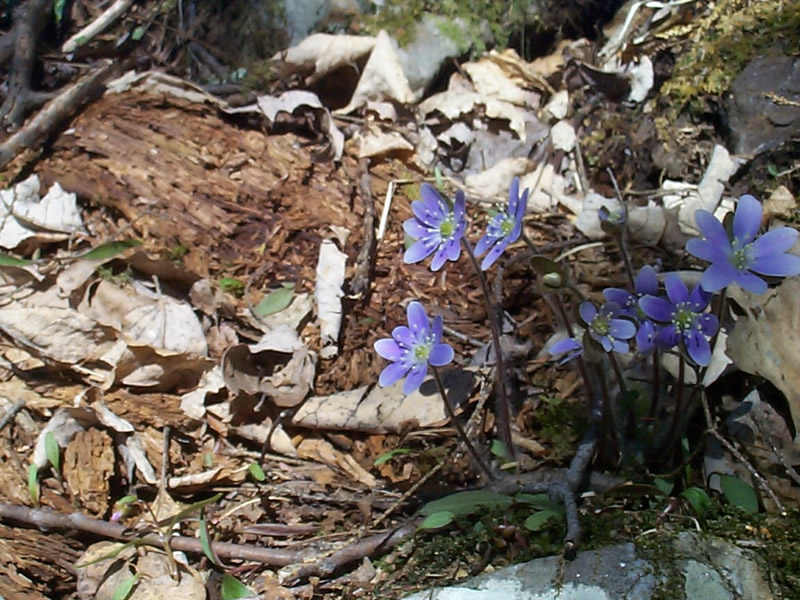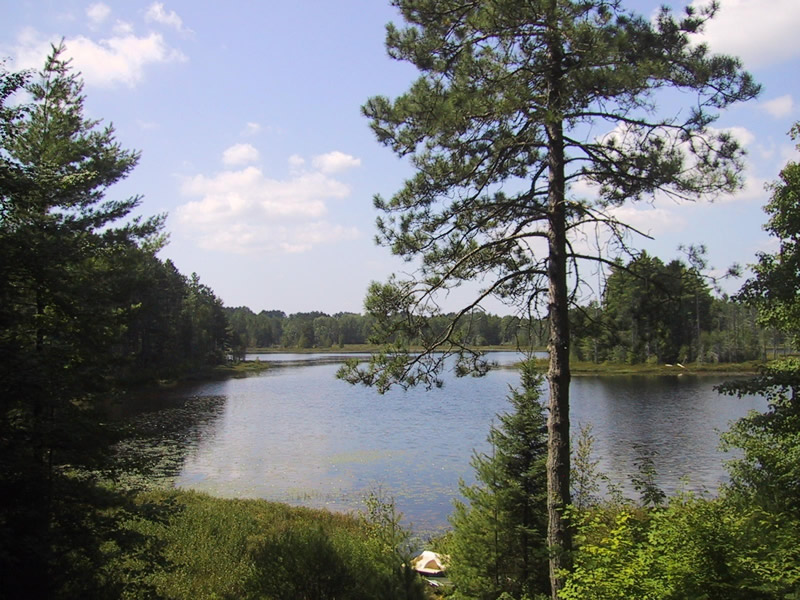Eastern Region
 Eastern Region. From “Guide to Your National Forests and Grasslands (PDF)”, 2006.
Eastern Region. From “Guide to Your National Forests and Grasslands (PDF)”, 2006.
The Eastern Region is rich in Native American history and culture. French voyagers and English explorers traveled the region's truly huge water bodies, such as the Ohio River, Mississippi River, and the Great Lakes. They initiated missionaries, fur trading, and timbering.
Islands of green in a sea of people, the Eastern Region is the most geographically, ecologically, and socially diverse area in the United States. Regional boundaries contain 20 states with over 43% of the nation's population, making it the most urban. Nine of the top 20 metropolitan areas in the U.S. are within the Region's boundary. National Forest boundaries include 24 million acres of land, although only one of every two acres within these boundaries is National Forest land. Management of the 12 eastern National Forests is thus extremely complex.
The Eastern Region is rich in water with over 10,000 lakes, 15,000 miles of streams, and 2 million acres of wetlands. The 12 million acres of national forest system lands are among the largest contiguous blocks of public lands. They are very rich in biological diversity and harbor 605 Regional Forester Sensitive Plants (PDF, 516 KB) and 13 federally threatened or endangered plants (PDF, 91 KB). Community types include: boreal forests; tall grass prairie; pine barrens; shoreline along three Great Lakes; central hardwood forests; glades; bogs; Appalachian foothills; the White Mountains; some of the most extensive virgin forests in the eastern U.S., and so much more.
Celebrating Wildflowers Success Stories
Celebrating Wildflowers has captured some of the remarkable botany-related projects and accomplishments of the Eastern Region.
List Eastern Region Success Stories
- List All Success Stories;
- Select a “Category…”, “National Forest or Grassland…”, or “State…” in the pulldown lists below; or
Rare Plant Conservation Success Stories
- Contributing to the Recovery of Leafy Prairie-Clover in Northeastern Illinois by Growing Plants from Seed and Planting in Restored Dolomite Prairie Habitat
- Discovery of New Hart's Tongue Fern Population
- Hiawatha Native Plant Program Successfully Grows Rare Downy Sunflower
- Midewin and its Plants of Concern Citizen Scientists, Making a Difference for Rare Plants
- Prescribed Burning Promotes Growth of Buffalo Clover
- Protecting Round-leaved Orchis (Amerorchis rotundifolia) on the Hiawatha National Forest
- Protecting Running Buffalo Clover (Trifolium stoloniferum) on the Wayne National Forest and Adjacent Private Land
- Recovery of Robbins' Cinquefoil - A Partnership Success
- Restoration of Douglas Hawthorn (Crataegus douglasii) in the Great Lakes Region
- Seek and You Might Find! U.S. Forest Service Botanists Locate and Work to Protect a New Population of Federally Threatened Fassett's Locoweed (Oxytropis campestris var. chartacea)
- Understanding and Conserving Appalachian Jacob’s Ladder (Polemonium vanbruntiae)
- Wayne National Forest Partners with Ohio Natural Areas and Preserves to Inventory for Rare Plants
- Wildfire Helps Rare Plants on White Mountain National Forest
Eastern Region Links
- Northern Research Station Research Natural Areas (RNAs) - These protected natural areas include unique ecosystems or ecological features; rare or sensitive species of plants and animals and their habitat; and/or high-quality examples of widespread ecosystems.
- Established Research Natural Areas - there are currently 51 established Research Natural Areas in the North Central and Northeastern states.
- Candidate Research Natural Areas - in the Eastern Region, there are 57 areas identified as candidate or potential RNAs, which are in various stages of review for possible establishment.
- Online Virtual Flora of Wisconsin - a collaborative effort between the herbaria of the UW-Madison (WIS) and the UW-Steven's Point (UWSP), along with most of the other herbaria located in the state of Wisconsin. It contains information on each of the more than 2600 vascular plant species that occurs in Wisconsin, including photos, distribution maps, specimen records, and more.
Butterfly Checklists
The Forest Service Eastern Region developed checklists of butterfly species that may be found on the national forests and grasslands of the northeastern United States.
- Allegheny National Forest (PDF, 212 KB)
- Chequamegon-Nicolet National Forest (PDF, 199 KB)
- Chippewa National Forest (PDF, 207 KB)
- Finger Lakes National Forest (PDF, 17 KB)
- Green Mountain National Forest (PDF, 205 KB)
- Hiawatha National Forest (PDF, 201 KB)
- Hoosier National Forest (PDF, 198 KB)
- Huron-Manistee National Forest (PDF, 211 KB)
- Mark Twain National Forest (PDF, 219 KB)
- Midewin National Tallgrass Prairie (PDF, 213 KB)
- Monongahela National Forest (PDF, 215 KB)
- Ottowa National Forest (PDF, 205 KB)
- Shawnee National Forest (PDF, 279 KB)
- Superior National Forest (PDF, 211 KB)
- Wayne National Forest (PDF, 215 KB)
- White Mountain National Forest (PDF, 201 KB)
Wilderness Flora Lists
- Boundary Waters Canoe Area Wilderness Plant Check List, Superior National Forest (PDF, 145 KB)
- Delirium Wilderness Area Rare Plant Species List, USDA Forest Service, Eastern Region, Hiawatha National Forest (PDF, 155 KB)
- The Vascular Flora of Lusk Creek Canyon, Lusk Creek Wilderness Area, Shawnee National Forest, Illinois (PDF, 1.9 MB)
- Checklist of the Vascular Flora of the McCormick Wilderness, Ottawa National Forest (PDF, 55 KB)
- Porcupine Lake Wilderness Flora (PDF, 149 KB)
- Rainbow Lake Wilderness Flora (PDF, 167 KB)
- Checklist of the Vascular Plants of Silver Mountain and the Sturgeon Falls Trail, Ottawa National Forest (PDF, 57 KB)
Non-native Invasive Species Learning Kit

Developed by the Forest Service's Eastern Region, Interactive Non-native Invasive Species learning kits are available to educate preschool to adult groups about non-native invasive plants and animals.
- Kit 1: Get a Grip on Biodiversity (PDF, 337 KB)
- Kit 2: Meet the Invaders (PDF, 285 KB)
- Kit 3: Close the Doors (PDF, 667 KB)
- Kit 4: Do Something (PDF, 5.3 MB)
Also See…
Wildflower Photographs

Red columbine (Aquilegia canadensis). Huron-Manistee National Forest. Photo by Larry Stritch.
-

Wild ginger (Asarum canadense). Monongahela National Forest. Photo by T.G. Barnes, USDA-NRCS PLANTS Database.
-

Pawpaw (Asimina triloba). Hoosier National Forest. Photo by Wayne Owen.

Blue bead lily (Clintonia borealis). Ottawa National Forest. Photo by T.G. Barnes, USDA-NRCS PLANTS Database.

Bunchberry (Cornus canadensis). Superior National Forest. Photo by Erin Heep.

Pink lady's slipper (Cypripedium acaule). White Mountain National Forest. Photo by T.G. Barnes, USDA-NRCS PLANTS Database.

White lady's slipper (Cypripedium candidum). Midewin Tall Grass Prairie. Photo by T.G. Barnes, USDA-NRCS PLANTS Database.
-

Squirrel corn (Dicentra canadensis). Monongahela National Forest. Photo by T.G. Barnes, USDA-NRCS PLANTS Database.

Yellow coneflower (Echinacea paradoxa). Mark Twain National Forest. Photo by T.G. Barnes, USDA-NRCS PLANTS Database.

Hepatica (Hepatica acutiloba). Green Mountain National Forest. Photo by Diane Burbank.

Northern plains blazing star (Liatris ligulistylis). Chequamegon National Forest. Photo by Larry Rantula.

Gaywings (Polygala pauciflora). Allegheny National Forest. Photo by Penny Stritch.

Purple pitcher plant (Sarracenia purpurea). Chippewa National Forest. Photo by Rhonda Stewart.

Fire pink (Silene virginica). Wayne National Forest. Photo by T.G. Barnes, USDA-NRCS PLANTS Database.

Star flower (Trientalis borealis). Finger Lakes. Photo by Penny Stritch.

Nodding wakerobin (Trillium flexipes). Shawnee National Forest. Photo by Penny Stritch.

Canadian violet (Viola canadensis). Hiawatha National Forest. Photo by Larry Stritch.

Bird's-foot violet (Viola pedata). Mark Twain National Forest. Photo by Larry Stritch.




